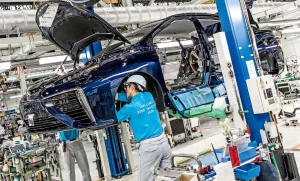
Exploring the Evolution of Self-Driving Technology in Automobiles
Self-driving technology is revolutionizing the future of automobiles. Benefits of these cars include increased safety, lower carbon emissions and eliminating human drivers altogether.
Automakers currently offer systems that meet SAE Level 2 standards, which allow drivers to remove their hands from the wheel in certain scenarios and can handle certain novel scenarios.
History
Autonomous vehicles, commonly referred to as robot cars or robocars, have been in development for decades. While autonomous cars may not yet be readily available to us all, major automobile companies like Tesla and Uber as well as Silicon Valley tech giants such as Google’s spinoff company Waymo continue to research fully autonomous vehicles.
Though self-driving technology might sound easy to master, its implementation can be complex. A great deal of data must be accumulated, organized, and provided to the car in an understandable format for use by its AI system – this may come from sources like cameras, radar and sensors.
These sensors are placed throughout a vehicle to create a picture of its environment and then go through various lines of code to understand what actions need to be taken based on what has been seen and identified by these complex algorithms. Only with such guidance can an autonomous car operate without needing input from its driver.
Technology
As with most technological revolutions, self-driving cars are taking the world by storm in gradual steps. Some are already available and companies that plan ahead, adapt quickly, and think big will succeed and thrive in this field.
Today’s driverless vehicles utilize an array of sensors to map their surroundings. Radar sensors detect other vehicles and the road surface; video cameras read signs and signals and search for pedestrians; lidar (light detection and ranging) sensors bounce pulses of light off their surroundings to measure distances; while lidar sensors use light pulses reflected from their environment to create distance measurements.
Computer systems process this data and translate it into commands for the vehicle within fractions of a second, translating into commands for it to execute, in fractions of a second. They monitor everything happening around them and determine what next action should be taken by monitoring events around them and comparing to historical trends. SAE classifies autonomous driving systems into five levels (0-5) with levels 0 and 2 being driver assistance features while levels 3-4 include real autonomous features.
Safety
At present, most cars feature advanced safety features as standard; however, most autonomous cars still rely on human drivers to intervene immediately in dangerous situations and prevent accidents from happening. Companies like Uber employ safety drivers who can act quickly in such instances.
Future self-driving technology could one day eliminate driver error and reduce fatalities from car crashes by enabling vehicles to operate safely. But before fully autonomous cars can hit the roads, state laws and regulations must adapt accordingly to ensure compliance with safety, insurance and liability requirements.
Autonomous vehicles can help alleviate traffic jams and improve lane capacity, leading to more efficient and safe transportation for humans and animals alike. But in order to realize these advantages, the system must overcome several technical challenges, including non-standard road markings between cities and states, blocked sensors due to weather conditions, upgraded network infrastructure to facilitate higher data rates and unexpected situations known as edge cases.
Pricing
As self-driving cars enter the near future, automakers and suppliers are developing business models that provide significant value to end customers. Many are focused on cutting costs through technology advancement or using existing infrastructure to establish autonomous driving capabilities across their networks.
ADAS systems can be an extremely potent sales driver, especially as their prices drop and customer willingness increases. McKinsey estimates that surround-view parking systems have grown in popularity from 90 million sold in 2014 to 140 million units sold by 2016 (referring back to their 2014 data).
Fully autonomous vehicles may still be several decades away from becoming reality on highways, and several decades before they reach city streets. Restrictive hurdles and human assumptions will play a huge role in their adoption – leaders should create ownership structures and sales practices which take into account all its advantages before taking this step forward.


